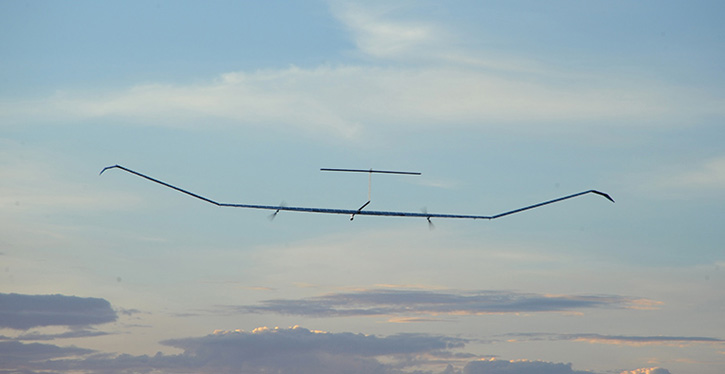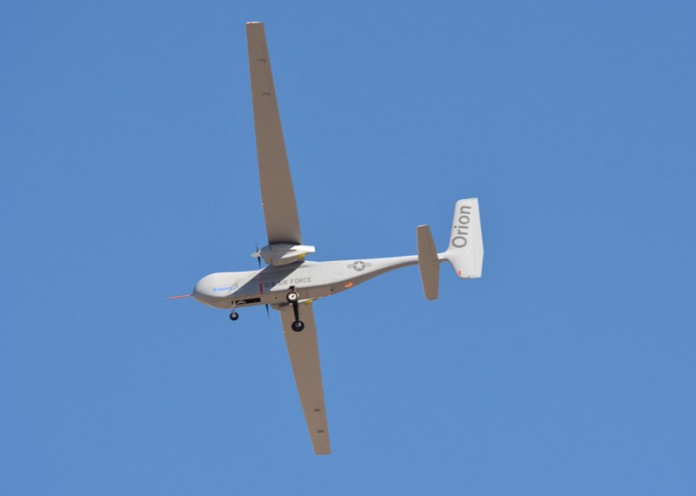
Aurora Flight Sciences announced that it has filed for an official world endurance record following an 80 hour flight by its Orion unmanned aircraft system (UAS). The previous official record of 30.5 hours was set in 2001 by the RQ-4 Global Hawk UAS. Observers from the National Aeronautic Association (NAA) were on hand to inspect the aircraft and witness the takeoff on Friday, December 5, 2014. They supervised the entire flight and witnessed the landing on Monday, December 8. The absolute endurance record for UAS is held by Qinetiq’s Zephyr 7 since 2010, for its flight from 9 July to 23 July 2010, lasting 336 hours and 22 minutes (2 weeks). Zephyr also demonstrated its high altitude cruising capability, reaching an altitude of 61,696 ft., while completing a full day / night cycle of operation over the UAE in September 2014. Airbus is intending to offer Zephyr for civilian, scientific, communications and surveillance applications.
The Orion, on the other hand, is designed primarily for military applications, providing users longer missions offering higher persistence and extended range of operation with heavier payloads. “The need for persistent surveillance in areas far from U.S. bases is a geo-political fact of life,” said Aurora CEO John Langford. “Orion can do this at operational costs significantly below any competing system. There are also important applications for this airplane in areas such as communications relay and Internet service provision.”
Orion is managed by the U.S. Air Force. The program began in 2007 when Aurora was competitively selected for the “Ultra Long Endurance” program sponsored by the Air Force Research Lab (AFRL). In 2009 Orion was selected as a Joint Capability Technology Demonstration (JCTD). Orion made its first flight on August 23, 2013. The record attempt was the 18th flight in the test effort.
The Orion UAS was designed by Aurora in Manassas, Virginia and was built by Aurora in Columbus, Mississippi. The mission was flown by four pilots: Peter Lehew, Cody Allee, Joel Walker and Dave Gerhardt. The flight was conducted at altitudes between 4,500 and 10,000 feet above Mean Sea Level. Orion landed with approximately 1,700 pounds of fuel remaining, with endurance being limited by range availability, enough for 37 more hours…
This record breaking flight was the 18th for the Orion, which has logged 158 flight hours, reaching altitudes up to 18,000 ft. Aurora plans to demonstrate the design 120 hour endurance later this year, performing the mission at 20,000 ft. carrying a 1,000 lb. payload.
Unlike the US Air Force Blue Devil 2 and Army Long Endurance Multi-Intelligence Vehicle surveillance airships that were canceled, the ultra long endurance drone built by Aurora under a joint-capability technology demonstration is still flying, although the system performed only 158 flight hours since its first flight in August 2013. Not much for a year and a half, as the 156 hours already include the 80 hour mission flown on the current record setting mission.
Despite the impressive performance of the system, the Air Force is not interested in buying more systems, Aviation Week [nonmember]reported[/nonmember][ismember]reported[/ismember]. “Additional flight testing is planned and funded . . . [but] there is currently no plan for procurement of Orion,” says the Air Force, as there is “no formal requirement” for the aircraft. “An operational deployment is not within the current scope of the demonstrator test program.”





















